November 2020 | Interview with Kamala Bennett, Landscape Designer Part II: This work is my profession, but it is also my art form, my spiritual practice, and my activism.
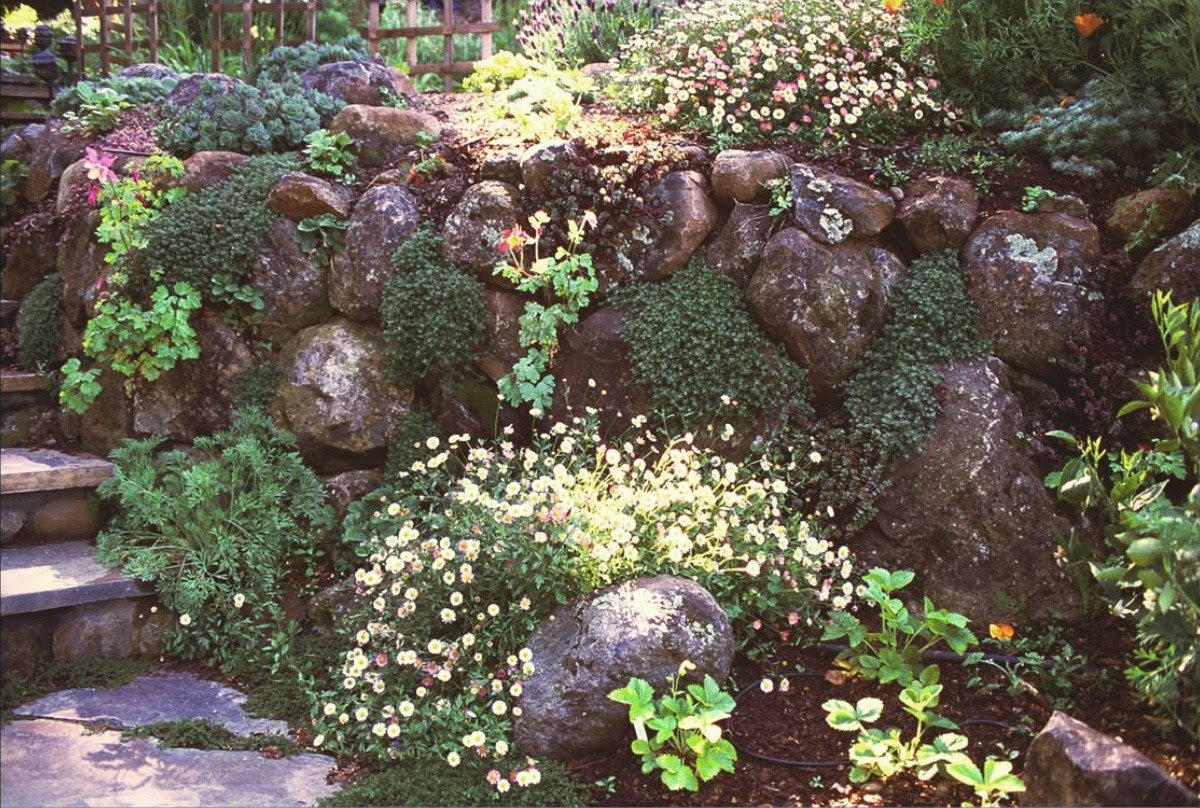
Photos by Kamala Bennett
The Sebastopol garden you mentioned (please see this link to Part I) was one of our first Sentient Landscape projects two decades ago. The care we gave to shaping pathways, contouring mounds, and placing every stone was a really energetic expression of our intention. The inspiration comes out of deep listening, deep observation, and a willingness to be totally receptive. When I step out of the way, patterns present themselves and informed creativity becomes vision.
The most effective design results always come out of collaboration in which nature has a strong voice. We bring in the idea that a property owner is being a steward of the land. There doesn’t have to be a contradiction between meeting human goals and needs, and regenerating ecosystems. Projects that include children are always wonderful. It reminds me to approach the design process with “beginners mind” and to imagine the sense of wonder and the many first encounters that someone closer to the ground will have as they move through the space, engaging and discovering.
We begin our design process with site analysis. This is data collection, but I find the most critical part is being really still. Getting to know our clients, as the humans in the system, involves listening to their visions, concerns, and reflections, asking them questions, and observing them as they interact with the environment.
Talking with clients I do my best to create authenticity and ease. As we discuss the possibilities, I pay close attention and register when their eyes sparkle. I remember asking J, “What colors really move you?” When she wasn’t sure how to answer this question in terms of the garden, I asked if I could look in her closet. She liked jewel tones! So, we planted a stunning and fragrant crimson rose prominently within view, just far enough away to draw her into the garden to smell the blooms, and just close enough to the path that she could easily snip flowers to bring the glory of the garden indoors.
My creative contributions come forth pretty naturally at this point, though I am always learning. A lot of ideas are generated to start with, and the design process is the gradual refinement, prioritization, and detailing. Some things I would not want to compromise and there are projects we would not take and would pass on. This work is my profession, but it is also my art form, my spiritual practice, and my activism.
We work hard to find ways to satisfy people’s desires and fantasies without compromising the ecological benefit. For example, with so much drought in California, it isn’t appropriate to plant heavy water-use plants as the foundation. We include native plants first, then other climate-adapted Mediterranean, Australian, New Zealand plants, etc. and lastly proven exotics (especially food-producing plants.) Creating wildlife habitat is a critical part of our work.
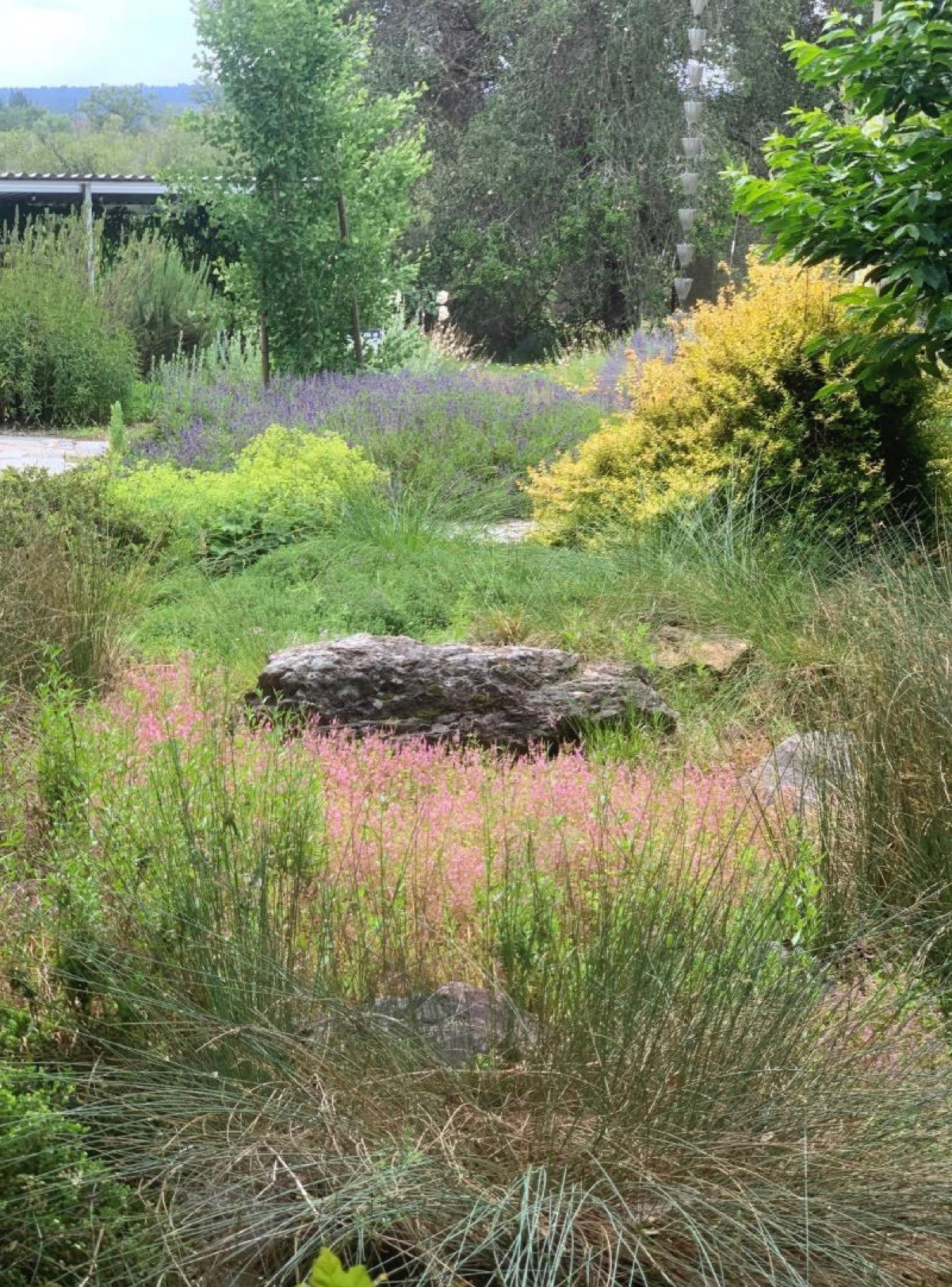
Geoff and I both design in layers using natural patterns as the foundation. We practice cultivating eco-systems, meaning we jump-start a dynamic, holistic system and watch as it evolves to take on a life of its own. We love the unexpected successes (like when herons start making regular stops at the pond.) If it is possible, even in a very small way, leaving part of the landscape wild is wonderful, letting the energy of it pollinate the rest of the garden. We focus on building healthy living soils by bolstering the micro-organisms with compost, introducing nitrogen-fixing plants, and incorporating beneficial fungi that absorb water and share nutrients. It is really true that you need to grow soil, not plants.
When we start a project the design process begins in 3D by visiting the site. But it is very helpful to look at designs in 2D, trying to work out relationships on paper. I’m a detail person and I telescope between the big picture and micro-detail. Designing is like the weaving of a tightly woven and intricate tapestry. For example, Geoff picks beautiful boulders that are contoured, so that the surface catches rain and becomes a birdbath. Underneath we carve in hidey-holes for snakes and lizards.
Longevity, resilience, and ease of management are all factors, too. We can design landscapes in many aesthetic styles, creating beauty while still meeting our objective for functional productive systems: Mediterranean, Formal, English, Japanese, Modern, Eclectic, Naturalized, etc.
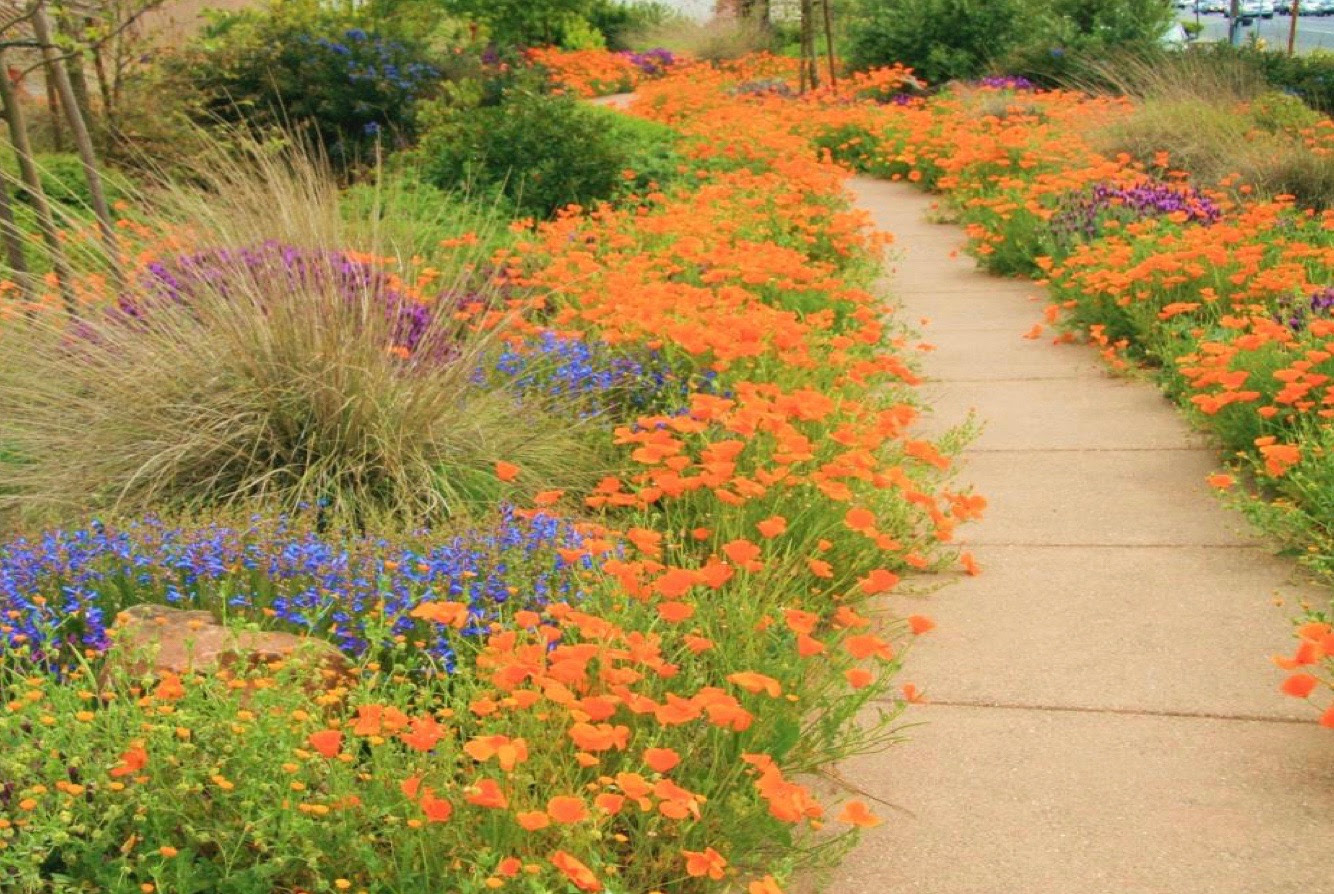
We take the metaphor of “starting at the top of the watershed” to heart. The first layer of design is usually the creation of a healthy, living water cycle. We slow water flows down and intentionally spread water through the landscape, storing it in the soil. We have a commitment to making sure that water is vibrant and clean before it leaves the site. Secondly, we craft the flow pattern, creating pathways throughout the landscape to allow for the movement of humans, other animals, materials, wind, and light. We assess the soils, study the indigenous plants, and consider what’s working about the existing garden, what isn’t? Each site is entirely unique. I feel very humbled and honored to speak on behalf of the natural world, to the extent that I’m able to.
The developer of the Sebastopol home, and five other adjacent houses, had installed one big drainage ditch collecting all the run-off from the houses and rushing it off immediately into a nearby creek. The well-intentioned plan was a total waste of resources. We saw this ditch as a wonderful opportunity to create a naturalized creek, celebrating the water. By reshaping the ditch and digging depressions to create pools, adding boulders, and riparian plants, we were able to reduce erosion and slow the rainwater down, allowing it to absorb into the soil before it ultimately flowed away clean. The creek became a moist and vibrant destination on the property, a wildlife refuge, and a favorite place for the children to play.
The garden also included swales, which are contoured topography designed intentionally to receive rainwater from the rain gutters, so the water would seep into the soil. We sheet-mulched the soil (using layers of cardboard, compost, and mulch) and planted edible, fragrant, medicinal, habitat perennials, shrubs, and trees. Water has a high surface tension. The swales and mulch store rainwater long into the dry season hidden in the soil, available for plants make use of. If we model landscapes after productive ecosystems and replicate forests, grasslands, and wetlands, we have the capacity to speed up the process of building topsoil. In this way, humans can create feet of topsoil in one year when it would take nature decades. To break up the hardpan from construction we seeded annual daikon radish and burdock which are deep tap-rooting plants. They push their roots down opening up channels for air and water, and adding organic matter when they eventually compost. Nutrient-rich soil that acts like a sponge is a wonderful home for beneficial organisms who occupy the cavities.
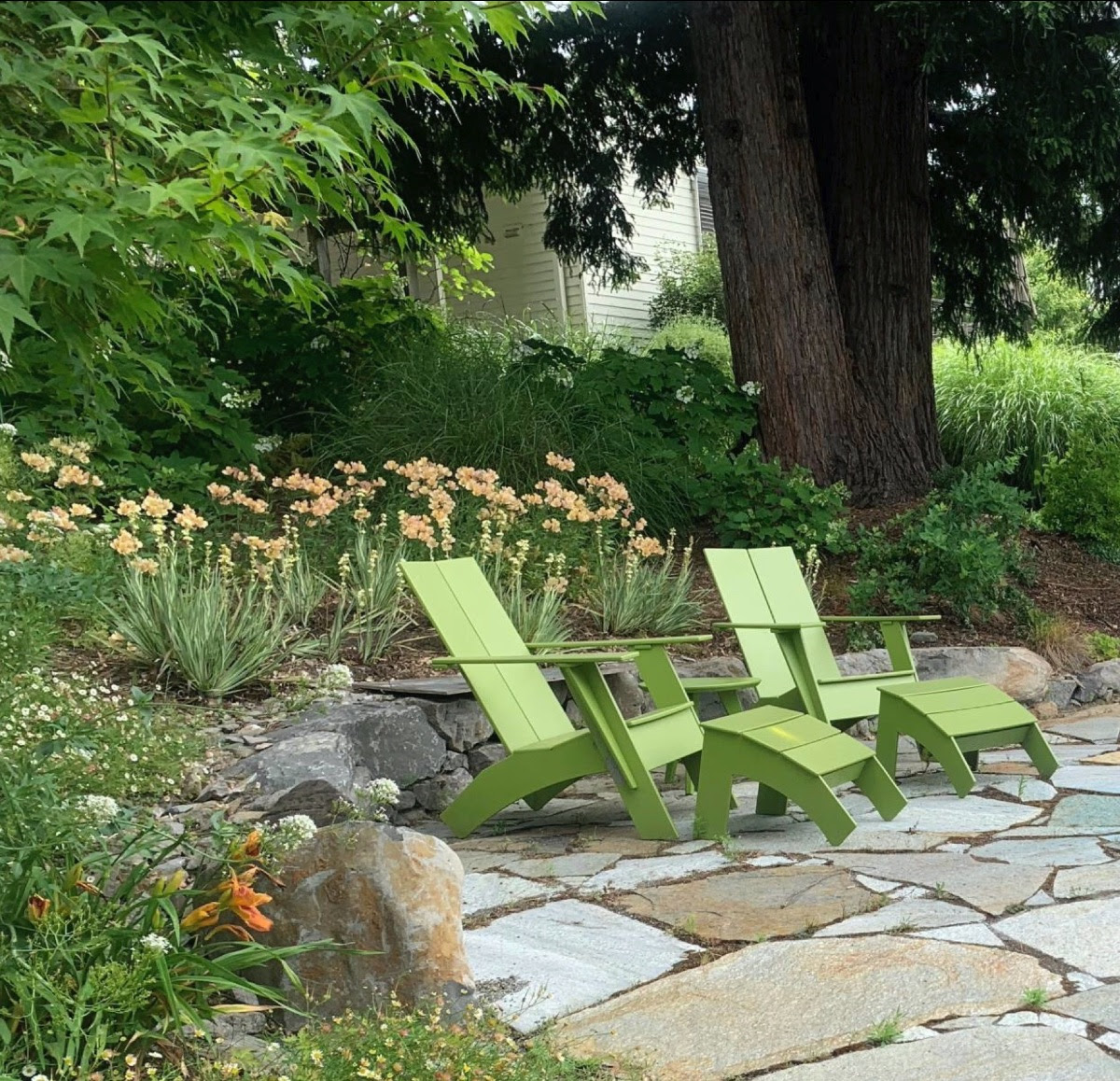
We try to enhance connectivity between structures and the landscape, expanding outdoor living spaces, and creating comfortable outdoor environments. There are many ways to partner with plants and materials to achieve this. We have worked on wide-open properties with uncovered cement patios on the west side of the house that are unbearably hot and pulse with heat even after the sun sets. So, we plant deciduous shade trees to remedy that late afternoon blaze. This helps reduce heat gain and glare inside the house, too. We incorporate water features that have a passive-cooling effect by adding moisture into the air. We even tune our fountains to cultivate a particular quality: slow sheet flow over carved stone creates meditative stillness; increasing flow can create an invigorating effect or a sound barrier to camouflage noise from neighbors.
Children’s gardens inspire me to consider the full breadth of sensory experience and the relationships with animal, mineral, and vegetable beings that are possible in landscapes. Human beings build a worldview based on tactile and sensory experiences, on the promises and offerings in the natural world, as well as the threats and dangers. When I studied anthropology, I remember looking at the child-rearing practices of the warrior tribes of Yanomami in South America and the San people, or Bushmen, in Southern Africa, who are hunter-gatherers. The Yana-Mamo lived in a jungle world where other tribes could come in the night and murder them. To toughen and prepare their children for life, they encouraged teasing and
In these immensely challenging times, we can feel disheartened by a sense of unraveling and life out of balance. I have come to realize that my work is the work of hope and optimism. I am not blind or even desensitized to the ruthless cycle of life and death. The violence inherent in the life cycle is not mean-spirited though, it just is. I definitely believe that humans have the potential to regenerate the earth if we can find the humility to truly listen, the curiosity to observe, and the courage to show up in partnership. If we combine ancient wisdom, the best of modern technology, and ingenuity, we will have a winning combination. I love David Attenborough’s reflection that hope lies in us being
Landscapes can touch us profoundly. I so want people to experience the immense abundance, resilience, inherent intelligence, and embrace of nature. We are designed to connect with nature. Our brains haven’t changed much in 100,000 years, though they might be starting to. Nature connection awakens a recognition of interconnectedness and this is fundamental to peace and compassion. Living in a close personal relationship with a high functioning, sentient landscape is not only fulfilling but assuages those fears that always ask us to do more, be more.
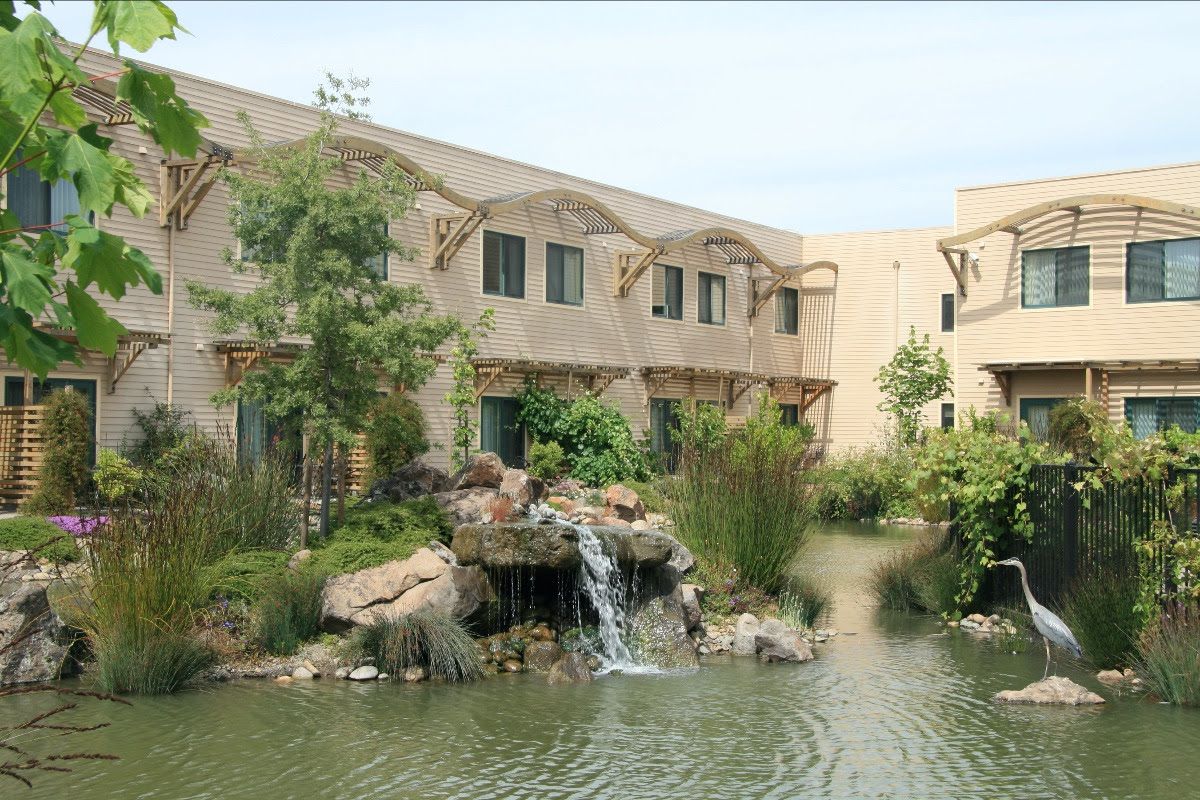
To learn more about the work of Sentient Landscape please visit Kamala and Geoff’s site at this link.
Kiley Clerk has started a GoFundMe at this link: https://www.gofundme.com/f/
Kiley gave us a Black perspective on Farming in August 2019 at this link. Since then she and her wife traveled last Fall throughout the northwest and further afield to look at farming opportunities. She has been working at Radical Family Farms, Sebastopol, growing vegetables for Asian culinary needs in San Francisco and the Bay Area. In November, Kiley and her wife will go to Washington State to search for a farm property. Prices are so much better than in California. Please consider giving generously to someone who will give back so much to the community!
Turn
Elegant terns with orange beaks and forked tails pool and rise in the shallows of the bay emitting cries millions of years old, echoed by long-beaked marbled godwits, black-bellied plover, western gulls with brown-feathered juveniles as large as themselves.
We step across the road into Owl Canyon, follow a short trail, ducking under willow and eucalyptus, crawling below lichen-layered trunks to listen to a trickling creek, and pick a few blackberries stretching past cow parsley and hemlock into the ancient mists. We laugh at our foolish notions of time―the master we’re forever fleeing from in fear and disbelief, when she always in her generosity gives enough, depending on how we turn.
From At This Table
Receive the Earth-Love Newsletter, event invitations, and always a poem.
